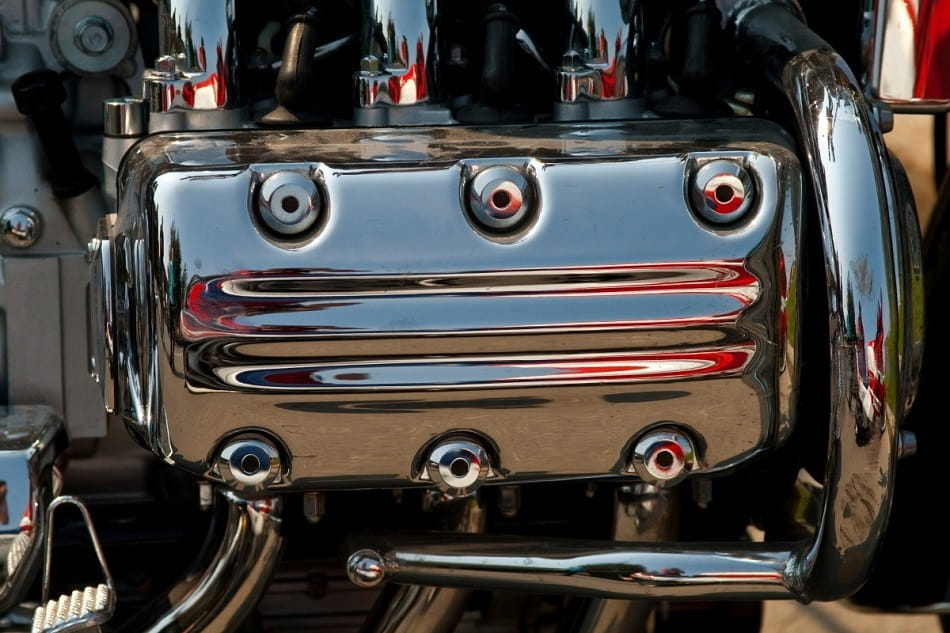How to Paint Over Chrome Surface: Learn in 12 Steps
Chrome is not a protectant to safeguard a surface. Instead, oxidation happens as soon as the chrome comes in contact with oxygen in the air. Therefore, painting over a chrome surface is often a good idea to protect it. Since chrome has a smooth and slippery finish, you may want to know how to paint over chrome. With the help of the right chrome painting techniques, the task becomes easy and seamless.
Why Cover up a Chrome Surface?
Before knowing how to paint over chrome, let’s learn about the danger of keeping it exposed.
Chrome or chromium is not the best thing for human health. It has many negative impacts on the throat, nose, skin, and eyes. Chrome badly affects the vision and sometimes damages the eyes.
Humans can develop symptoms similar to asthma, influenza, and allergies when they come in contact with it.
How to Paint Over Chrome in 12 Simple Steps
Follow these steps to put paint on any chrome surface.
Step 1
The first step is cleaning the surface with some soap and water. Let it dry completely.
Step 2
Use 220 to 320 grit paper to sand the whole piece. If the surface has deeper scars, rust, or pits, use sandpaper of 120 or 60 grit. Continue rubbing till the chrome surface becomes free of these things. An untreated pit may pop out any time and ruin the paint.
If the 60 grit paper fails to remove the damage, use a grinder. In this case, do not forget to wear safety glasses. Finish it up with a 320 grit paper to have minimal scratching from the previous sandpapers.

Step 3
If there is any low spot, fill it with liquid steel from a tube. For fills that are less than 1/8-inch deep, use a glazing compound. After the compounds dry up, level it to the original surface using some heavier grit paper. Finally, follow up with 320 grit.
Step 4
With the help of a rag or clean cloth, remove all sanding dust by wiping the surface. Then, wipe the piece with a wax remover or lacquer thinner.
Step 5
Wear a face mask before spraying the self-etching primer on the chrome surface. Applying two light to medium coats should be sufficient. Have an interval between the coats for drying. This primer will prepare the surface for regular primer by gripping the metal.
Step 6
When the primer dries up, you have to spray a high-build primer on that layer. Apply two to three coats and allow each coat to dry before applying another one.
Step 7
Closely look at the surface and rub it with your hand. If there are any remaining flaws or pinholes, use glazing spot putty to fill it. For better inspection, rub it slowly while wearing cloth gloves.
Step 8
If there is any glaze, sand it down. For a smooth finish, sand the whole piece, including its edges, with 220 or 320 grit paper. Chips or flaws become more visible after painting, so it is worthwhile to spend some time to make the surface smooth.
Step 9
Now, you have to wipe the chrome surface again using a lacquer thinner or wax and grease remover. In this way, it will be free from any oil, dust, or debris that may negatively affect the paint job. Wiping only once should be enough as overdoing will harm the primer.
Step 10
Place the nozzle head about 8 to 10 inches from the surface and spray two to three paint coatings of light to medium base without letting the paint run.
Take breaks when holding down the nozzle. Otherwise, it will create heavy spots of chrome. Instead, try to spray in even spurts. In the case of runny paints, wait until the paint dries up completely. On the next day, use 1,000 to 1,500 grit paper to sand the piece and then respray it.
Step 11
Wait for 15 to 30 minutes after the paint dries up. Then, apply two to three coats of the clear-coat finish by spraying. The area should have sufficient lighting because there will not be any color of the coating, and the sprayed area will only have a shine. You may need to look at it from various angles.
SEE MORE
Step 12
Once the clear coat dries over two to three days, use a fine rubbing compound to get rid of any small flaws, runs, and bumps from the coating and get a smooth finish. The chrome will also get a shine from that.
After applying the compound using a wax applicator, wait for two minutes. Then is the time to buff out. You can use your hand or a wool pad if the surface is large in size. Finally, apply wax to enhance the shine and better protection.
Conclusion
Since painting a chrome surface is different from other paintworks, it is not a commonly known method. However, once you know how to paint over chrome, it becomes an easy process.














